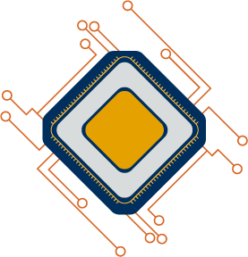In this chapter, the answers from the Enlarged Board of Appeal to the referred questions in G 1/19 are given, revisiting some points from the previous chapters. The following information are based on points 139 to 144 of G 1/19.
Question 1 – solution of a technical problem by a simulation as such
No group of computer-implemented inventions can be a priori excluded from patent protection. For this reason alone, question 1 is to be answered in the affirmative. Furthermore, the COMVIK approach requires an assessment of the technical contribution of the individual features of computer-implemented inventions. Like any other computer-implemented method, a simulation without an output having a direct link with physical reality may still solve a technical problem.
Question 2B – technical principles as a sufficient condition
It has been established in the COMVIK approach that, depending on the technical context, features that are non-technical per se may still contribute to the technical character of a claimed invention, just as features that are technical per se will not necessarily contribute to it. In a similar way, the simulation of non-technical processes may contribute to the technical character of an invention. On the other hand, it may be that the simulation of a technical system does not contribute to it.
A simulation is necessarily based on the principles underlying the simulated system or process. Even if these principles can be described as technical, the simulation does not necessarily have a technical character. Were it sufficient, for the purposes of question 2B, for the simulation to be based on technical principles, then computer-implemented simulations would hold a privileged position within the wider group of computer-implemented inventions without there being any legal basis for such a privilege. Question 2B is therefore to be answered in the negative, which means that for numerical simulations too it must be examined on a case-by-case basis whether the standard “technicality” criteria for computer-implemented inventions are met.
A numerical simulation which contributes to a technical solution of a technical problem may even reflect non-technical aspects, such as human behaviour, which can be described, for example, by game theory models. If the fact that a simulated system or process was based on non-technical principles necessarily meant that the simulation could not have technical character, this would mean a particular group of numerical simulations being discriminated against without any legal basis for such discrimination.
In view of this, the Enlarged Board is of the opinion that it is neither a sufficient nor a necessary condition that a numerical simulation is based, at least in part, on technical principles that underlie the simulated system or process.
Question 3 – Simulation as part of a design process
In the Enlarged Board’s understanding, question 3 refers to claims explicitly mentioning a design process, in particular a process for verifying a design. A design process is normally a cognitive activity. However, following the COMVIK approach and depending on the technical context, features relating to a design may or may not contribute to the technical character of a claimed invention.
The Enlarged Board does not see any need for the application of special rules if a simulation is claimed as part of a design process. Any special treatment of such combinations would cause delimitation problems since “design” is not a clear criterion and the term itself need not even be mentioned in a claim to a design process. Moreover, there could be uncertainties as to the applicability of such special rules since design steps may be claimed in contexts which do not involve simulations.
